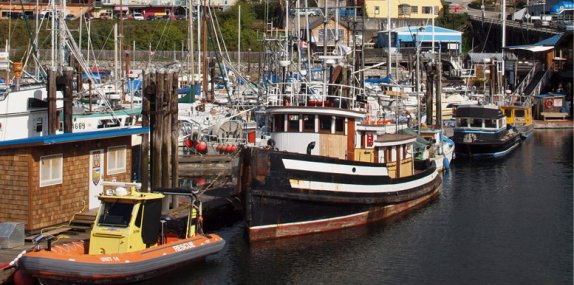
Written by Emmanuel Machado,Chief Administrative Officer, Town of Gibsons, B.C. Canada:
Canadian municipalities must innovate to address at least three major, interconnected issues now and over the coming years.
The first is to manage more effectively the infrastructure and assets that underpin quality of life and economic productivity in an era of scarce resources. There is no evidence anywhere in Canada to suggest that we are yet making sufficient progress in this domain. The second is to contain costs, taxes and risks, which requires continuous improvements in the delivery of municipal services. The third is to maintain community resilience in the face of challenges, both known and unknown, including climatic variability and extremes due to climate change.
The Town of Gibsons, just north of Vancouver, is pioneering a strategy that could contribute to the efforts of municipalities in BC and elsewhere to address these issues.
The Gibsons “eco-asset strategy” is proving to be an effective financial and municipal management approach that complements strategies to maintain, replace and build both traditional engineered assets such as roads and storm sewers and engineered “green” assets” such as rain gardens, parks and bio-swales. Moreover, the eco-asset strategy can support municipal climate change adaptation and resilience building efforts.
The strategy focuses on identifying existing natural assets such as green space, forests, topsoil, aquifers and creeks that provide municipal services such as storm water management; measuring the value of the municipal services provided by these assets; and, making this information operational by integrating it into municipal asset management.
The innovation in this strategy is that it helps to explain the value of natural assets in terms of financial and management strategies. It takes Gibsons beyond making an environmental case for preserving nature, which is relatively straightforward, and beyond headline-grabbing, but often hard-to-translate statements, that a tree or beach is “worth” a certain amount in terms of ecosystem services provided. In other words, the eco-asset strategy allows us to bring the value of nature into the DNA of our municipal decision making.
The heart of Gibsons’ approach is North America’s first natural asset policy, which directs the municipality to consider the role of natural assets within our overall asset management strategy. What gives life to the policy is the fact that, once the natural asset is within the policy, a budget must be set aside for its ongoing management and maintenance, and town staff must work together to preserve its integrity.
So far, we have used the policy to integrate the Gibsons aquifer into the municipal asset management strategy. This asset that costs about $28,000 annually in monitoring costs, compared to many times that amount to operate a filtration and treatment plant.
Now, we are now working on integrating the foreshore and a forested area into the asset management plan.
The foreshore provides a vital natural seawall that protects Lower Gibsons. It will become even more important as projected sea level rises and increased storm surges materialize. Keeping it in good health therefore protects our business area, and may help us to avoid entirely the capital and operating costs of an engineered stormwall. In this example, the eco-asset strategy should increase our resilience, protect the heart of our business area, and afford us with the resources and flexibility to undertake other initiatives.
The forest in Gibsons contains creeks and ponds that manage, convey and filter stormwater run-off. If we can keep the area as a healthy ecosystem and manage it in a way that optimizes its current functions, then we manage risks by avoiding a massive liability for building, installing and maintaining storm drains that would have to replace the existing, natural one.
In these three examples, I am focusing on the municipal services provided by the assets. However, it must be emphasized that the foreshore and forest, for example, provide many other recreational, health and cultural benefits that only add to the case for their preservation, not to mention the many other ecosystems services such as pollination, air purification, etc. although those services are outside of the direct responsibility of local governments in Canada.
Each municipality has its own realities. In some, traditional, engineered assets are the way to go; in others, green roofs, living roofs and living walls will be needed to mimic natural systems. Likely, a combination of approaches will be most beneficial. Therefore, we in Gibsons encourage municipalities to map out their natural assets and the services that they provide; and, determine whether these assets can be restored, managed, or managed differently to provide vital municipal services. The approach could be of particular relevance in B.C.’s coastal areas where we both have the benefit of proximity, and also share many common natural features and risks.
Written by Emmanuel Machado,Chief Administrative Officer, Town of Gibsons, B.C. Canada. Emanuel will be speaking at the World Forum on Natural Capital.
Share this page: